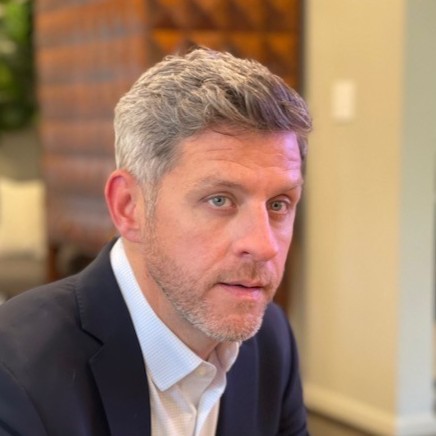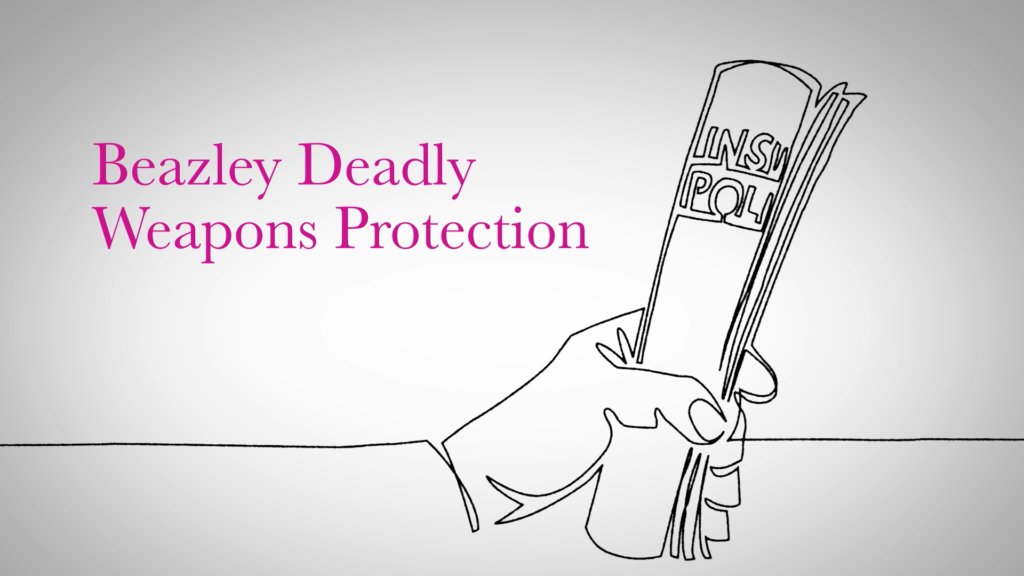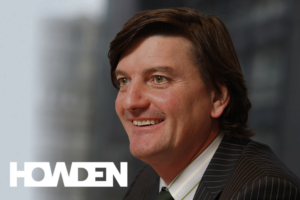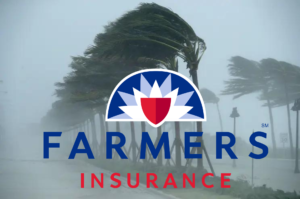In 2023, there were over 630 mass shootings in the US, as defined by the Gun Violence Archive, which considers an incident as a mass shooting if four or more people are injured or killed.
According to a 2015 study, researchers at Harvard and Northeastern universities found that Americans collectively own about 265 million guns—more than one gun per American adult. Half of these firearms, around 133 million, are owned by just 3% of American adults. These “super owners” each possess an average of 17 guns.
With so much weaponry in circulation, it’s not surprising that the number of mass shootings has risen significantly since 2019, when 247 took place. The rise highlights the need for organisations to be aware of how to protect people and assets and reduce the risk of attacks.

Such shootings occur in various settings, including homes and public places, and their terrifying increase has resulted in a sharp response from the insurance industry in the form of Deadly Weapons Protection – namely, cover that calls organisations to account regarding their security measures, thereby mitigating risk, and also providing financial protection for victims of mass shootings or other types of attacks, in case the worst happens.
Deadly weapon event facts
- Notable incidents: The deadliest mass shooting in recent history occurred in Las Vegas in 2017, resulting in over 50 fatalities and 500 injuries. However, most mass shootings involve fewer than 10 casualties.
- Gun-related deaths: In 2021, the US Centers for Disease Control and Prevention reported 48,830 deaths from gun-related injuries, marking an almost 8% increase from the previous year. While media attention often focuses on mass shootings and homicides, more than half of these deaths in 2021 were suicides.
- Deadly Weapons Protection: Protection against lethal weapons encompasses various armaments beyond firearms or blades. It includes any handheld item wielded violently to inflict harm. Thus, it extends beyond shootings and may not even necessarily entail the actual deployment of a weapon.
Insurance products now combine traditional risk transfer with crisis response and risk management. These policies can offer crisis planning audits, educational training, and security services. In the event of an attack, they provide crisis PR, counselling, and security. The response team identifies stakeholders, manages communication, and provides support during the crisis.
Insurtech Insights caught up with Justin Peterson as he offers a glimpse into his unconventional role within the insurance sector.
You underwrite Deadly Weapons Protection. How did you get involved with it – and what does your job involve?
When I was approached for the roleI didn’t know a lot about this type of coverage. I started to do some research into the space and was really attracted to what this product was doing and what this product was about. And it was so much outside of traditional insurance and risk transfer and really focusing on the loss prevention and the loss control and the mitigating things that we can do before, during, and after a loss.

It was such a unique product and again, I saw a ton of potential in it and so I wanted to be a part of it and that’s how I got started. My role as an underwriter is a little bit different in this particular line of business because outside of the traditional underwriting responsibilities of reviewing a risk, pricing a risk, et cetera, a large focus on this role is really dedicated to education. And that’s both educating buyers and agents and our distribution partners that this product is available and what this product really is doing and what this product’s goal is.
A lot of what we spend our time and energy on is educating individuals in the space and potential buyers about what Deadly Weapons Protection is and getting them outside of the mindset of traditional risk transfer versus what we can do to eliminate this loss and what we can do to prevent and protect your organisation.
What special training did you have to undergo, if any, in order to do this job?
Beyond the usual technical training, there’s a whole other side to our learning curve. We’re diving deep into understanding the market and how it reacts to different situations. It’s about keeping tabs on industry shifts and how they impact what we do.
We’re talking about knowing what’s going on legally and in regulations, because that affects a lot of what we do. We’re also looking at where the product’s heading and where losses are trending.
What exactly is deadly weapons protection? Who does it cover and who is it safeguarding against?
We follow what we call a three-pillared approach. First up, our primary focus is on prevention and response, and then ultimately insurance. When we talk about insurance, we’re covering things like third-party legal liability, property damage, medical payments, and more. Those are the nuts and bolts of the policy.
Our main focus is on prevention and response. We’re all about helping organisations set up solid violence prevention protocols and comprehensive programs that tackle all potential risks head-on. Essentially, we’re safeguarding organisations against losses, but more importantly, we’re looking out for the people within those organisations. That means not just employees, but customers, stakeholders — everyone. It’s about making sure those losses never happen in the first place.
Which industries most commonly apply for DWI?
It’s crucial to realise that no industry is safe from these kinds of events. They can happen anywhere, anytime. If we had to pinpoint the biggest industry sectors affected, we’d probably say education, religious institutions, hospitality, healthcare, retail, and public entities are among the top buyers. But honestly, we see interest and purchases from all sectors because nobody’s completely immune to these kinds of events.
In the market, this type of product is typically known as “active assailant” coverage. Beazley utilises the term “deadly weapons protection” because it covers a wide range of weapons, not just guns or knives. It could be any handheld object used violently with intent to cause harm. So, it’s not just about shootings, and it doesn’t even have to involve actually using a weapon.
Our policy kicks in even if a weapon is just threatened or shown. so no requirements on the number of victims. Basically, it’s designed to cover any violent incident that happens on your premises as an organisation.
What’s the current regulatory environment for DWP solutions?
We’re witnessing a shift in the legal landscape, with laws being enacted that require organisations to implement robust violence prevention programs. For instance, Senate Bill 553 was recently signed into law in California, mandating employees to take measures to prevent and respond to workplace violence. Similar requirements are expected to emerge in other states. This legal trend underscores the growing obligation for organisations to safeguard their employees and stakeholders.
False images and narratives spread through AI-generated content can stoke hatred towards individuals, groups, or organisations. However, AI is also being leveraged to enhance security measures and prevent violence. Advanced technology now enables the detection of weapons from miles away, alerting organisations to potential threats in their vicinity.
Justin Peterson
Amidst increasing incidents, courts are reevaluating liability and foreseeability. What used to be considered rare occurrences are now becoming more frequent, prompting courts to reassess what constitutes “reasonably foreseeable” events. Additionally, legal discussions are underway regarding the eligibility of employees affected by mass shootings to seek legal remedies beyond workers’ compensation.
Cases such as the school teacher shot by a six-year-old in Virginia and the Walmart shooting in Chesapeake, also in Virginia, are examples prompting legal debates about tort suits versus traditional workers’ compensation claims. The outcome of these discussions could significantly impact organisations’ legal liabilities.
The demand for DWP solutions is steadily on the rise – especially in the US. Tell us about that.
Yes, there are multiple factors contributing to the increased demand for our product. The unprecedented levels of violence in the US over the past few years have undeniably fueled interest and demand. While our program is available globally, the majority of our clients are based in the US, given the unfortunate frequency of such events in the country.
Moreover, there’s been a noticeable shift in mindset. People are no longer clinging to the belief that such tragedies won’t happen to them. Take the shooting in Lewiston, Maine, for example, which saw a dramatic spike in homicide rates in just one day. It’s become clear that even seemingly safe places aren’t immune to these incidents, prompting individuals to recognise the reality that it could happen to them.
Furthermore, the surge in violence has led some traditional insurance providers in the casualty market to consider distancing themselves by imposing definitive firearms exclusions. This has created a gap in coverage, driving the need for products like ours to fill that void.
As for specific regions, no area of the US is immune to violence. These incidents can occur anywhere, which is why we’re seeing increased interest and demand nationwide.

How can companies minimise their risk and what strategies can they adopt or would you as an underwriter advise them to adopt as part of risk prevention? Where do they even start?
My biggest piece of advice would be to prioritise a comprehensive prevention program. I can’t stress enough how crucial it is to focus on prevention rather than solely relying on incident response measures. While drills and critical incident response protocols are important, the ultimate goal should always be to prevent such incidents from occurring in the first place.
It’s not just about physical security controls. Organisations need to consider various other aspects, such as behavioural risk awareness training and implementing anonymous reporting systems. For instance, how are terminations handled? Are employees made aware of any potential threats posed by terminated individuals?
It’s crucial to educate employees about warning signs and provide them with avenues for anonymous reporting. A robust violence prevention program encompasses much more than just drills and immediate incident response measures. While those are important, they should be complemented by proactive prevention efforts to minimise the risk of incidents occurring in the first place.
In essence, my biggest advice is to focus on enhancing prevention measures on the front end to mitigate the risk of such incidents occurring.
It’s all about fostering a cultural shift and paying attention to key behavioural warning signs. It’s about listening to people and being attuned to what’s going on around us. It’s not about being overly empathetic towards potential threats, but rather about changing our perspective as a community and as organisations. The focus should be on taking proactive steps before it’s too late.
What developments are happening within the DWP space, what new threats are emerging and what innovations are being developed to safeguard against them?
Artificial intelligence (AI) has become a major talking point lately. The World Economic Risk Report has highlighted AI-driven misinformation and disinformation as the top risk facing the world in the next couple of years. You might wonder, what does this have to do with violence? Well, it poses significant challenges for organisations in identifying legitimate threats amidst a sea of hoaxes and false rumours. This can lead to heightened tensions and the need to deescalate potentially volatile situations.
False images and narratives spread through AI-generated content can stoke hatred towards individuals, groups, or organisations. However, AI is also being leveraged to enhance security measures and prevent violence. Advanced technology now enables the detection of weapons from miles away, alerting organisations to potential threats in their vicinity.
There’s been a lot of discussion lately about missed warning signs and the need for more proactive measures. Rather than reacting only when a threat is imminent, we need to be proactive in recognising and reporting concerning behaviours. It’s about being more vigilant and taking action before a situation escalates to the point where a gun is in the room, so to speak.
Justin Peterson
So, while AI offers immense potential to improve various aspects of our lives, it also presents security concerns. It’s a double-edged sword—a blessing in terms of innovation, yet a curse when it comes to security threats. It’s a balancing act between harnessing AI’s benefits and mitigating its risks, both of which are shaping the emerging threat landscape.
What do you like most about your work?
What I find most fulfilling about my job is the diversity of challenges I face every day. In my previous role, I was confined to a single product line within the insurance sector. However, in my current role, it’s less about insurance and more about assisting organisations in becoming better and safeguarding their people.
The overarching theme of our work revolves around empowering organisations to prevent losses and protect their people. While it’s impossible to prevent every loss, our goal is to provide financial protection in case something does happen. Yet, our primary focus is on proactive measures to prevent incidents from occurring in the first place.
Unfortunately, I don’t foresee a rapid decrease in the rate of violence in the US over the next several years. This ongoing trend is likely to result in a sustained or even increased level of violence, further emphasising the need for products like ours.
Justin Peterson
I find great satisfaction in knowing that our efforts are geared towards making a tangible difference in the safety and security of our clients’ employees, customers, and stakeholders. It’s incredibly rewarding to be part of a team that is dedicated to empowering others and making a positive impact in preventing potentially harmful events.
Do you need a degree of psychological understanding to carry out your work effectively?
I don’t think it’s necessarily about having an in-depth psychological understanding. It’s more about shifting our focus away from waiting until someone walks in with a gun to recognising potential threats much earlier. It’s about paying attention to what individuals are saying, how they’re behaving, and any changes in their demeanour over time. By shifting our mindset to identify these warning signs before a crisis occurs, we can better mitigate the risk of such events happening.
There’s been a lot of discussion lately about missed warning signs and the need for more proactive measures. Rather than reacting only when a threat is imminent, we need to be proactive in recognising and reporting concerning behaviours. It’s about being more vigilant and taking action before a situation escalates to the point where a gun is in the room, so to speak.
Where do you see the future of this insurance solution going in the next few years given the current climate risk?
Unfortunately, I don’t foresee a rapid decrease in the rate of violence in the US over the next several years. This ongoing trend is likely to result in a sustained or even increased level of violence, further emphasising the need for products like ours. As organisations face mounting legal and societal pressures to enhance security measures and protect their people, our product becomes increasingly essential. We’re here to assist them in meeting those obligations and ensuring the safety of their employees and stakeholders.
Given these factors, I anticipate continued growth in demand for our product. Eventually, I believe it will become a standard inclusion in organisations’ insurance packages rather than just an optional coverage. It’s akin to the trajectory we saw with cyber insurance about a decade ago. Initially, there was uncertainty about how to cover cyber risks, but over time, it became a recognised and essential part of insurance portfolios.
Similarly, our product is evolving into a standalone offering, gaining recognition as a defined coverage within the insurance space. As traditional carriers begin to shift their focus towards standalone products like ours, we’re poised to see even more rapid growth in this product line. The convergence of increased violence levels and the evolving insurance market landscape will likely drive further expansion and adoption of our product.
Interview by Joanna England








